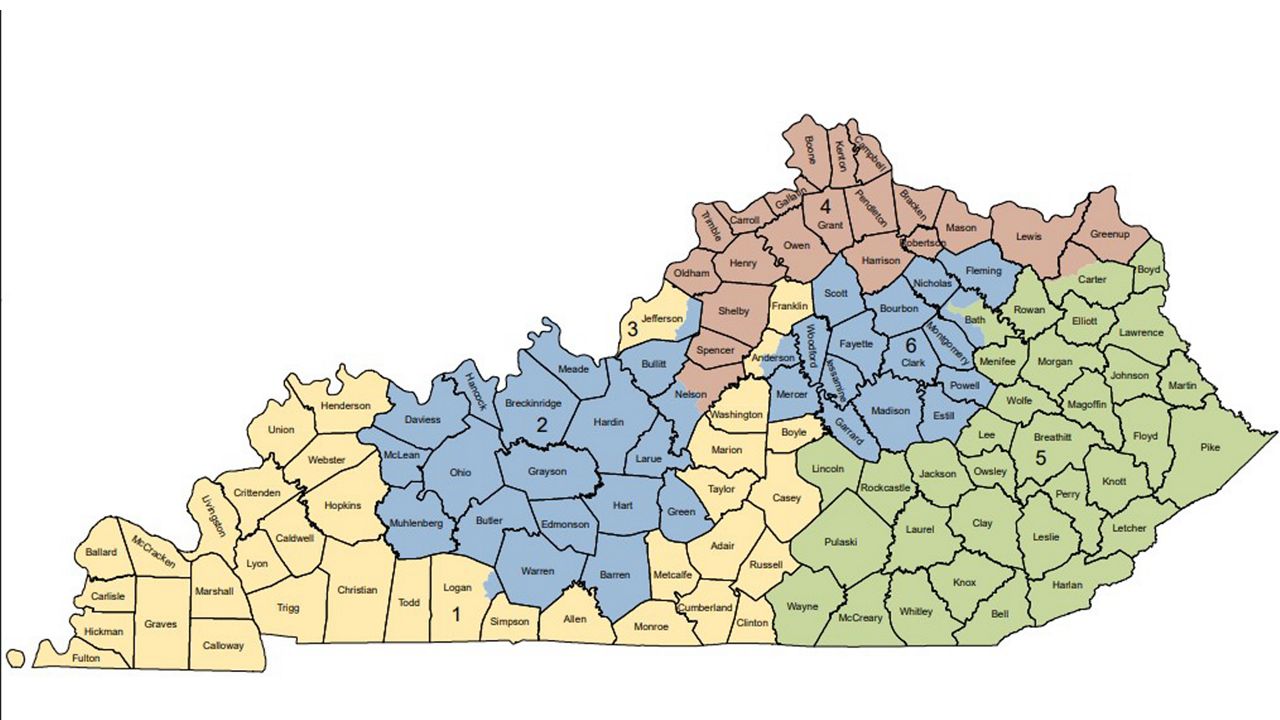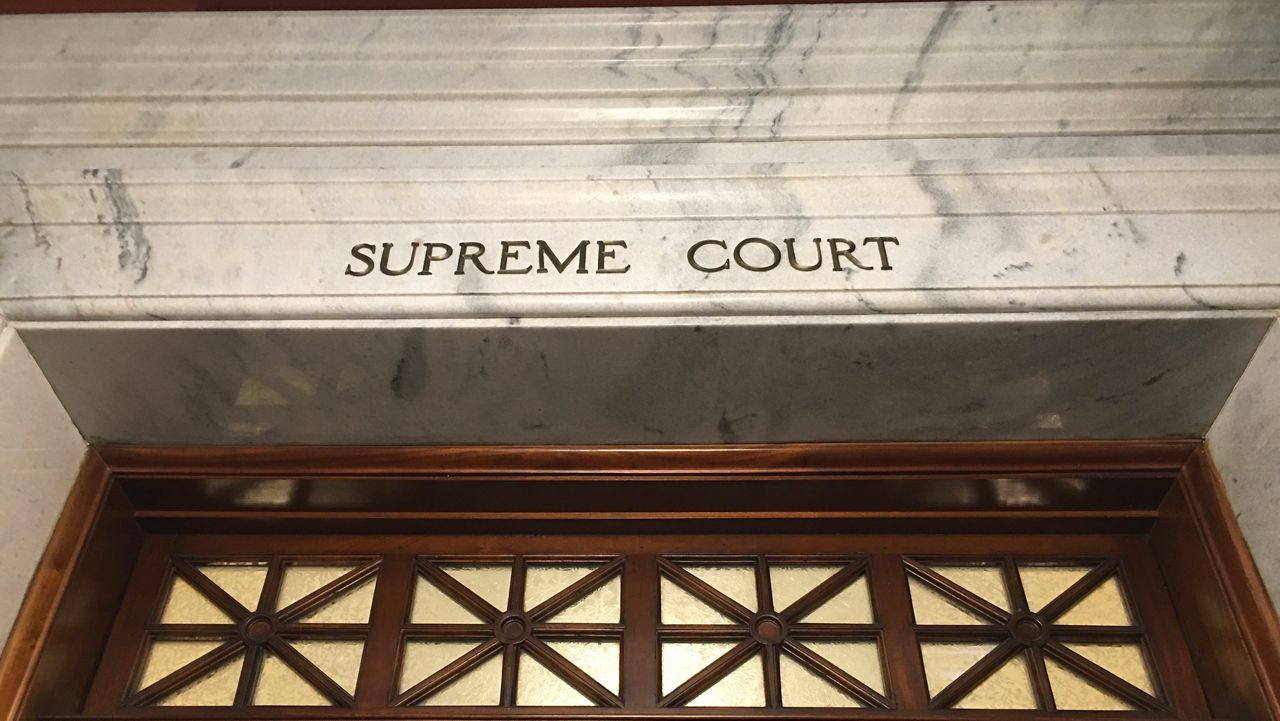FRANKFORT, Ky. — Kentucky Democrats took their legal fight to the state's highest court on Tuesday in challenging Republican-drawn boundaries for state House and congressional districts.
The hearing before Kentucky's Supreme Court at times revolved around a lower court ruling that the new maps did not violate the state constitution. Franklin County Circuit Judge Thomas Wingate concluded that the new boundaries amounted to “partisan gerrymanders,” but said the constitution “does not explicitly forbid the consideration of partisan interests in apportioning representation."

Supreme Court Justice Kelly Thompson said that issue looms as “the crux of this matter” as the high court reviews the redistricting case. Thompson pointedly asked an attorney for the Democrats whether the court had ever invalidated newly drawn districts based solely on the grounds of gerrymandering.
“Not yet," replied the attorney, Michael Abate. "This court has not done so.”
Abate said the case boils down to whether the court has a role in reviewing partisan gerrymandering.
“This court understands the power given to the Legislature to draw the maps," he said. "But this court is given the power to evaluate the maps and to see if they comport with the constitution.”
In defending the maps drawn by the Republican-led Legislature, Deputy Attorney General Victor Maddox said Democrats were asking the court to “institute a revolution in redistricting.” Democrats want to use “social science metrics” created in recent years to take away the Legislature's redistricting authority, he said.
“I would suggest that nothing in our constitution supports that proposition,” Maddox said.
The legal fight over the boundaries comes as both parties recruit candidates for the 2024 elections for the Legislature and Congress. At the end of the hourlong hearing, Chief Justice Laurance B. VanMeter said the court would do its “very best” to reach a decision as soon as it can.
With the new districts in effect in last November's midterm election, Republicans increased their legislative supermajorities. Several Democratic state House members lost their reelection bids after having Republican-friendlier territory tacked onto their districts. Wingate's ruling came shortly after the election.
The new maps are being challenged by the state Democratic Party and several individuals, including Democratic state Rep. Derrick Graham. Their lawsuit contends that the once-a-decade mapmaking reflected “extreme partisan gerrymandering” in violation of the state constitution. It claims the state House map divided some of Kentucky’s most populated counties into multiple districts to “dilute the influence” of Democratic voters. The goal, it said, was to cement the Republican House supermajority and stifle dissent.
Top GOP lawmakers have said they're confident the mapmaking would hold up against any challenge.
Criticism of the new congressional maps was mainly aimed at extending the oddly shaped 1st Congressional District to add Franklin County, which includes Democratic-leaning Frankfort in central Kentucky. The congressional district, a GOP stronghold, is predominantly based in western Kentucky.
Republicans claimed 80 of the 100 seats in the Kentucky House in last year's election, Justice Angela McCormick Bisig noted. She said it was “hard to overlook” projections that Democrats would have gained only three additional seats using an alternative redistricting map they offered. Given that difference, she said, “it’s hard for me to explain that we’re at that extreme level” that would spur the court to intercede.
Abate responded that the Democratic alternative wasn't the best map for the party, but was offered to show that redistricting could be “done better and more compliant” with the constitution.
Maddox noted that in a span of three elections, Democratic membership in the Kentucky House dwindled significantly under Democratic-drawn maps for the chamber. That should put to rest the Democratic claims of partisan unfairness in the Republican-drawn maps, he said.
“And it provides the most compelling reason for this court to reaffirm its long-standing rules regarding redistricting and, more important, to stay out of the political thicket that redistricting represents,” he said.
Republicans took complete control of Kentucky's Legislature after the 2016 election, when the party claimed the state House, ending nearly a century of Democratic dominance of the chamber. The GOP already held the state Senate majority. Since then, the GOP has increased its numbers in the Legislature.
In drawing the new boundaries for Kentucky's six congressional districts, Republicans kept the only Democratic-held district basically intact. That district covers most of Jefferson County, which includes Louisville, the state’s biggest Democratic stronghold.



